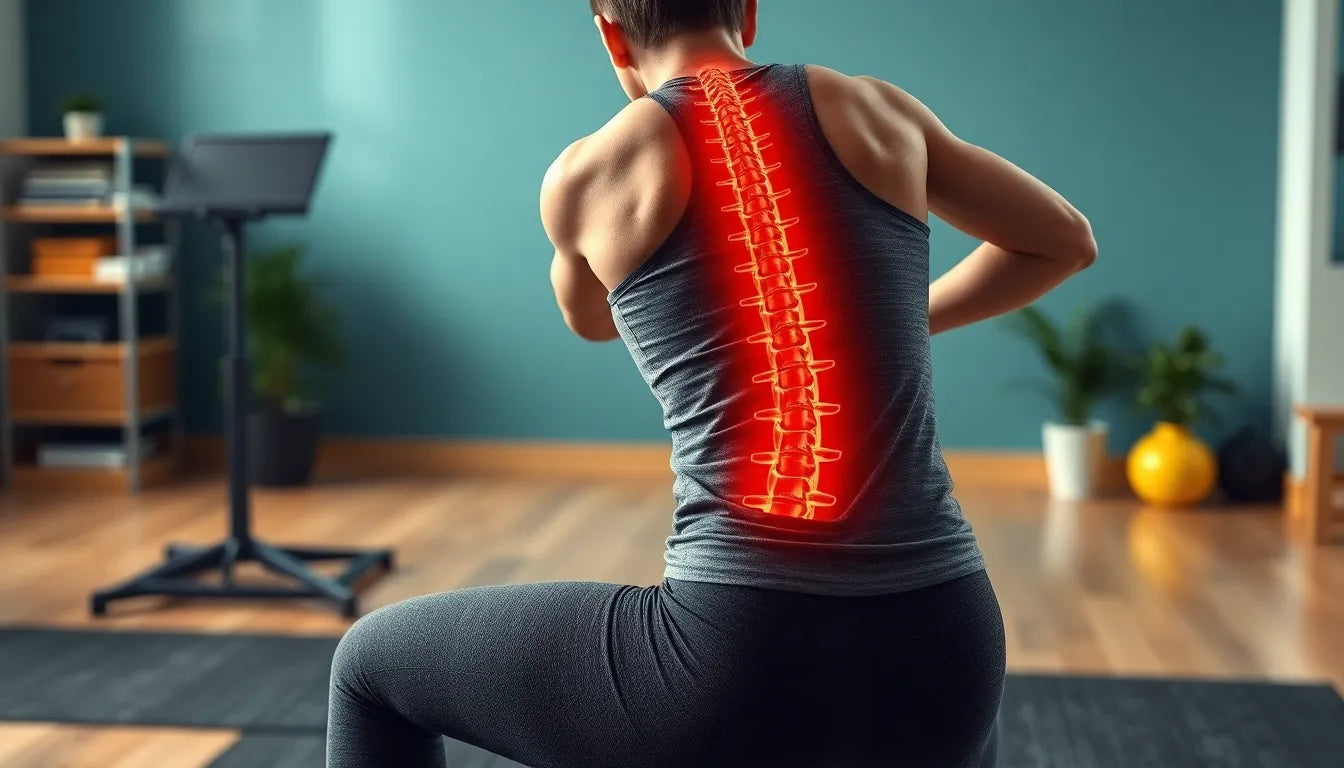In today's fast-paced world, the demand for ergonomic design has never been more critical. As our daily routines increasingly involve long hours at desks, both at work and home, the need for environments that support our physical well-being becomes paramount. Poor ergonomic setups can lead to a multitude of health issues, including persistent back pain, neck strain, and repetitive stress injuries. These problems not only affect our productivity but also our overall quality of life. Fortunately, ergonomic design offers a promising solution, paving the way towards a pain-free existence.
Understanding ergonomic design
Ergonomic design is a thoughtful approach to creating products and environments that prioritize human comfort and efficiency. At its core, ergonomic design focuses on optimizing both human well-being and the performance of systems we interact with daily. By tailoring workspaces, furniture, and tools to fit the natural movements and postures of the human body, ergonomic design aims to reduce physical discomfort and prevent injury.
The principles of ergonomic design have evolved significantly over the years. Originally rooted in industrial settings, where the focus was on improving worker productivity and safety, ergonomics has since expanded into various industries, including office environments, healthcare, and even home design. This evolution reflects a growing awareness of the importance of ergonomics in enhancing our daily lives, whether we're typing at a computer, cooking in the kitchen, or relaxing in the living room.
By integrating ergonomic principles into our surroundings, we can create spaces that not only support our physical health but also enhance our mental well-being. As we continue to explore the benefits of ergonomic design, it becomes clear that this approach holds the key to a healthier, more comfortable lifestyle.
Principles of ergonomic design for optimal well-being
At the heart of ergonomic design lies a set of guiding principles aimed at promoting comfort, efficiency, and safety. One of the most critical aspects is adjustability. Adjustable furniture and tools are essential because they cater to the diverse body sizes and shapes of users. This flexibility ensures that individuals can modify their workspaces to fit their unique needs, reducing the risk of strain and injury. For example, an adjustable chair allows users to alter the height and back support, promoting proper posture and reducing pressure on the spine.
Another fundamental principle is the encouragement of neutral postures. By designing environments that support natural body alignments, ergonomic design helps minimize stress on muscles and joints. Keeping the spine aligned and maintaining a relaxed position for the arms and wrists are key to preventing common issues like carpal tunnel syndrome and chronic back pain. Ergonomic workstations often feature desks at appropriate heights and monitor stands that keep screens at eye level, promoting these beneficial postures.
Additionally, comfort and accessibility are paramount in ergonomic design. Products and environments should be intuitive and easy to use, minimizing unnecessary effort and strain. For instance, ergonomic keyboards are designed to reduce wrist strain, while tools with cushioned grips enhance comfort during prolonged use. By prioritizing user-friendly designs, ergonomic solutions help individuals perform tasks more efficiently and comfortably.
Unlocking the benefits of ergonomic design
The adoption of ergonomic design principles offers numerous advantages, particularly in terms of health. One of the most significant benefits is the reduction in musculoskeletal disorders. By encouraging proper posture and minimizing repetitive movements, ergonomic design helps prevent conditions such as lower back pain and tendonitis. This proactive approach not only enhances physical well-being but also reduces the need for medical interventions and time off work due to injury.
Moreover, ergonomic design has been shown to boost productivity. When individuals are comfortable and free from physical discomfort, they can focus better and work more efficiently. Ergonomic workspaces reduce distractions caused by pain and fatigue, allowing for sustained concentration and improved performance. This increase in productivity benefits both employees and employers, as it leads to higher output and job satisfaction.
Beyond physical health and productivity, ergonomic design also positively impacts psychological well-being. A comfortable and supportive environment can reduce stress and enhance mood, contributing to a more pleasant and motivating atmosphere. When individuals feel physically supported, they are more likely to experience a sense of well-being and mental clarity, leading to improved overall quality of life.
Practical steps to implement ergonomic design in daily life
Integrating ergonomic design into everyday life is both feasible and beneficial. In the workplace, creating an ergonomic office setup is crucial. Begin by selecting an ergonomic chair that supports the natural curve of the spine and allows for height adjustments. Position the computer monitor at eye level to prevent neck strain, and use a keyboard and mouse that promote a neutral wrist position. These adjustments can significantly enhance comfort and productivity.
At home, consider ergonomic solutions in various settings. In the kitchen, arrange frequently used items within easy reach to minimize bending and stretching. In the living room, choose furniture that supports good posture and allows for relaxation without strain. Simple changes like these can make a substantial difference in daily comfort and well-being.
Finally, explore the wide range of ergonomic gadgets and tools available. Products like ergonomic keyboards, mice, and standing desks are designed to alleviate strain and promote healthy postures. Investing in these tools can transform your work and home environments into spaces that prioritize health and efficiency.
Case studies: Transformative power of ergonomic design
Real-world examples highlight the profound impact that ergonomic design can have on both individual well-being and organizational productivity. One notable case study involves a large corporation that implemented a comprehensive ergonomic overhaul in its offices. By introducing adjustable desks, ergonomic chairs, and monitor stands, the company reported a significant reduction in employee complaints related to back pain and repetitive strain injuries. Productivity metrics also showed a notable increase, as employees experienced less fatigue and were able to maintain focus for longer periods.
In another example, a small business owner reconfigured her home office with ergonomic principles in mind. By investing in an ergonomic chair and desk setup, she alleviated chronic neck and shoulder pain that had previously hindered her work. The improved comfort not only enhanced her physical health but also boosted her creativity and efficiency, allowing her to expand her business more effectively.
The future of ergonomic design
As technology continues to evolve, so too does the field of ergonomic design. Emerging trends suggest a future where smart technology and personalized solutions play a pivotal role. Innovations such as adjustable furniture with memory settings, which can automatically adapt to the user's preferred posture, are becoming more prevalent. Additionally, the integration of wearable technology that monitors posture and provides real-time feedback is set to revolutionize how we interact with our environments.
Advancements in materials are also on the horizon, with sustainable and adaptive materials offering new possibilities for ergonomic products. These materials not only enhance comfort and support but also align with growing environmental concerns by reducing waste and promoting sustainability.
Frequently Asked Questions
What is ergonomic design?
Ergonomic design is a discipline focused on optimizing the interaction between people and their environments. It involves creating products and spaces that enhance comfort, efficiency, and safety by accommodating the physical needs and limitations of users.
Why is ergonomic design important?
Ergonomic design is crucial because it helps prevent health issues such as musculoskeletal disorders and repetitive strain injuries. By promoting proper posture and reducing physical stress, ergonomic design enhances productivity and overall well-being.
How can I make my workspace more ergonomic?
To create an ergonomic workspace, start by adjusting your chair to support your spine's natural curve, positioning your monitor at eye level, and using a keyboard and mouse that promote a neutral wrist position. These adjustments can significantly improve comfort and reduce strain.
What are some common ergonomic products?
Popular ergonomic products include adjustable chairs, sit-stand desks, ergonomic keyboards and mice, monitor stands, and footrests. These items are designed to support healthy postures and reduce the risk of injury.
Can ergonomic design help with existing pain issues?
Yes, ergonomic design can alleviate existing pain issues by addressing the root causes of discomfort. Adjusting your environment to support proper posture and reduce strain can help manage pain and prevent further injury.























